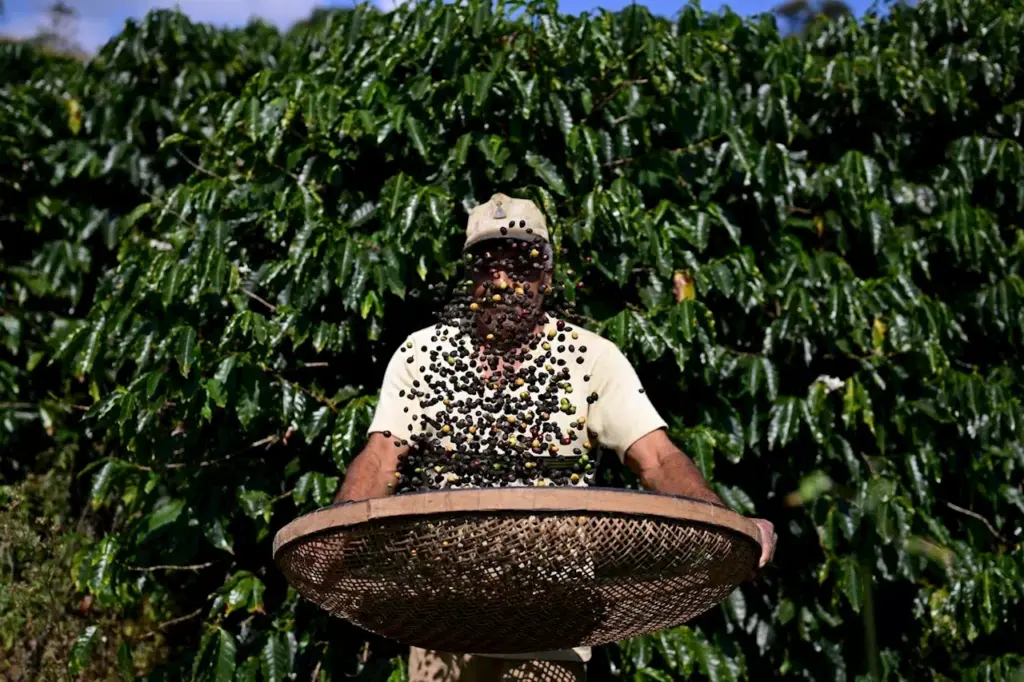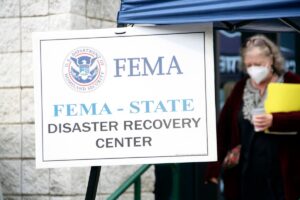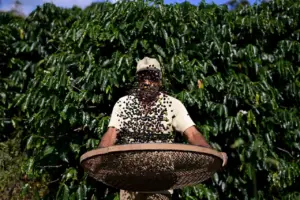
The administration of President Donald J. Trump has lifted tariffs on over 200 food items, including coffee, bananas, and beef, in a bid to alleviate rising prices. This reversal comes as consumers face significant price increases, with coffee prices soaring by more than 40% year-over-year and banana costs up nearly 9% as of September 2025.
Initially imposed as part of a sweeping trade strategy in April 2025, these tariffs were intended to promote U.S. self-sufficiency in food production. During the announcement of the tariffs, dubbed “Liberation Day,” President Trump emphasized that a nation cannot thrive if it is unable to produce its own food. However, the reality is that the United States is unable to produce sufficient quantities of certain goods, particularly tropical products like coffee and bananas.
In a new executive order signed on November 13, 2025, President Trump acknowledged the need to revise this approach. “We just had a little bit of a rollback on some foods, like coffee as an example, where the prices of coffee are a little bit high now. They’ll be on the low side in a very short period of time,” Trump stated. The exemptions will take effect retroactively, allowing consumers to benefit from lower prices almost immediately.
Tariffs are typically levied as a means of generating revenue or protecting domestic industries from foreign competition. In theory, such measures should encourage consumers to opt for domestically produced goods. However, the challenges of growing coffee and bananas in the U.S. have become apparent. Both products thrive in specific climatic conditions found primarily in regions such as Brazil and Vietnam, making it impractical for the U.S. to rely on domestic production to meet demand.
The tariffs imposed on coffee imports from countries like Brazil and Vietnam reached as high as 50%. This strategy has not only failed to stimulate local production but has also inflated prices for consumers, leading to heightened concerns about affordability.
In response to the mounting pressure from rising food costs, the White House released a list of over 100 products that will now be exempt from tariffs. This list includes various tropical fruits and other agricultural goods that are essential to American consumers but cannot be produced at scale domestically.
Legal challenges have emerged regarding the legality of the tariffs, particularly under the International Emergency Economic Powers Act (IEEPA). Earlier this year, a federal appeals court ruled that President Trump exceeded his authority by imposing these tariffs without Congressional approval. The court stated that the power to levy taxes, including tariffs, is constitutionally vested in Congress. Trump has appealed this decision to the Supreme Court, which is currently reviewing the matter.
The IEEPA allows the president to address national security threats, but the application of this law to tariff imposition has been contested. Critics argue that the executive branch lacks the authority to impose tariffs without explicit delegation from Congress. The outcome of this legal battle could have significant implications for future trade policy.
As the administration re-evaluates its tariff strategy, President Trump continues to promote the benefits of tariffs as a means of revenue generation. Recently, he suggested distributing checks of $2,000 per person to help ease the financial burden on American families. This proposal has drawn mixed reactions, and its implementation would require Congressional approval.
Despite the administration’s assertion that prices have decreased significantly, average grocery prices in the U.S. were still reported to be 2.7% higher in September 2025 compared to the previous year. Trump acknowledged that some tariffs may contribute to price increases but maintained that inflation is under control.
With the administration’s latest move, consumers may soon see some relief at the grocery store. The next steps in the legal challenges surrounding the tariffs and the potential impact on food prices will be closely monitored, especially as the political landscape continues to evolve in the lead-up to upcoming elections.







